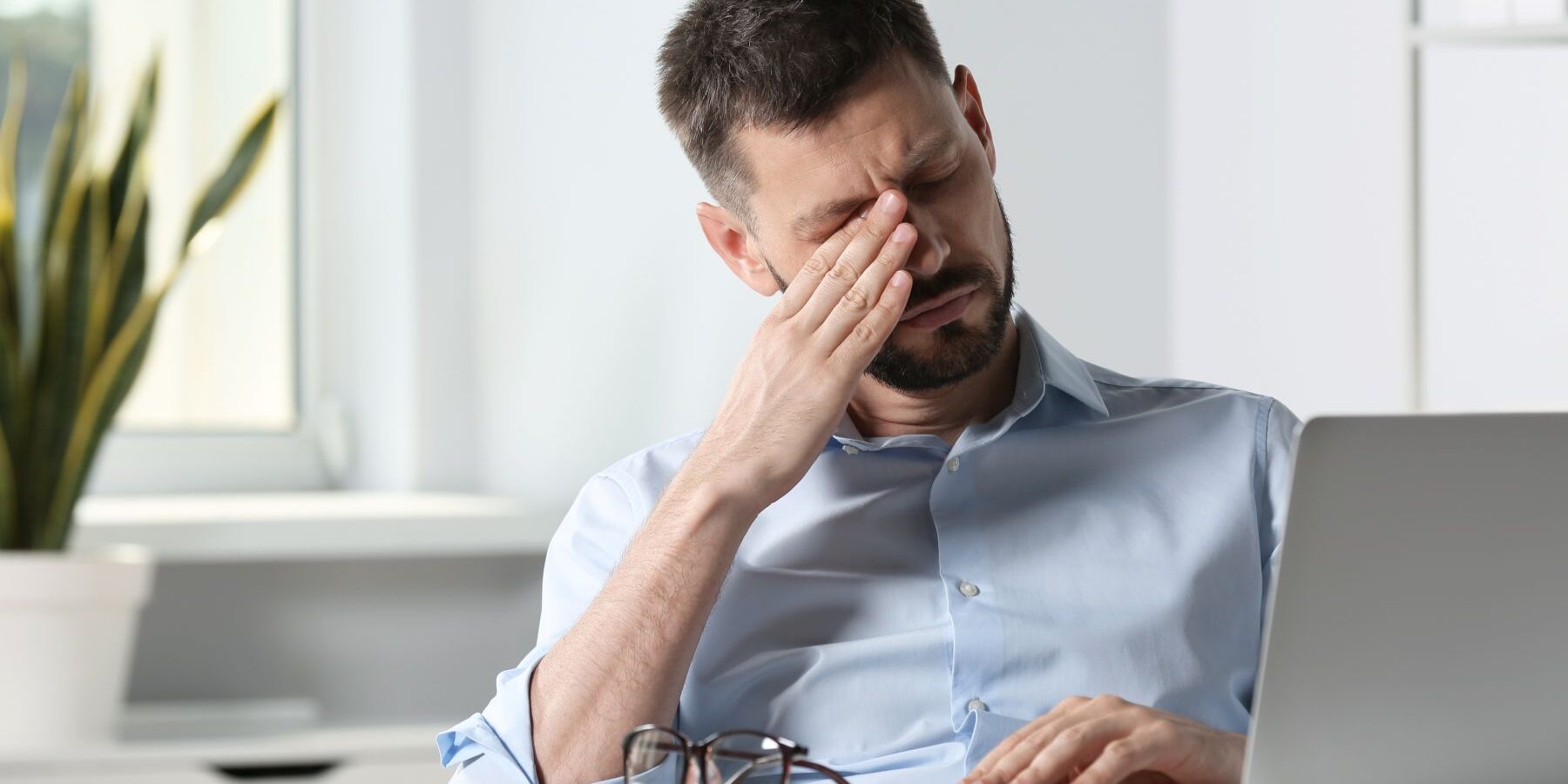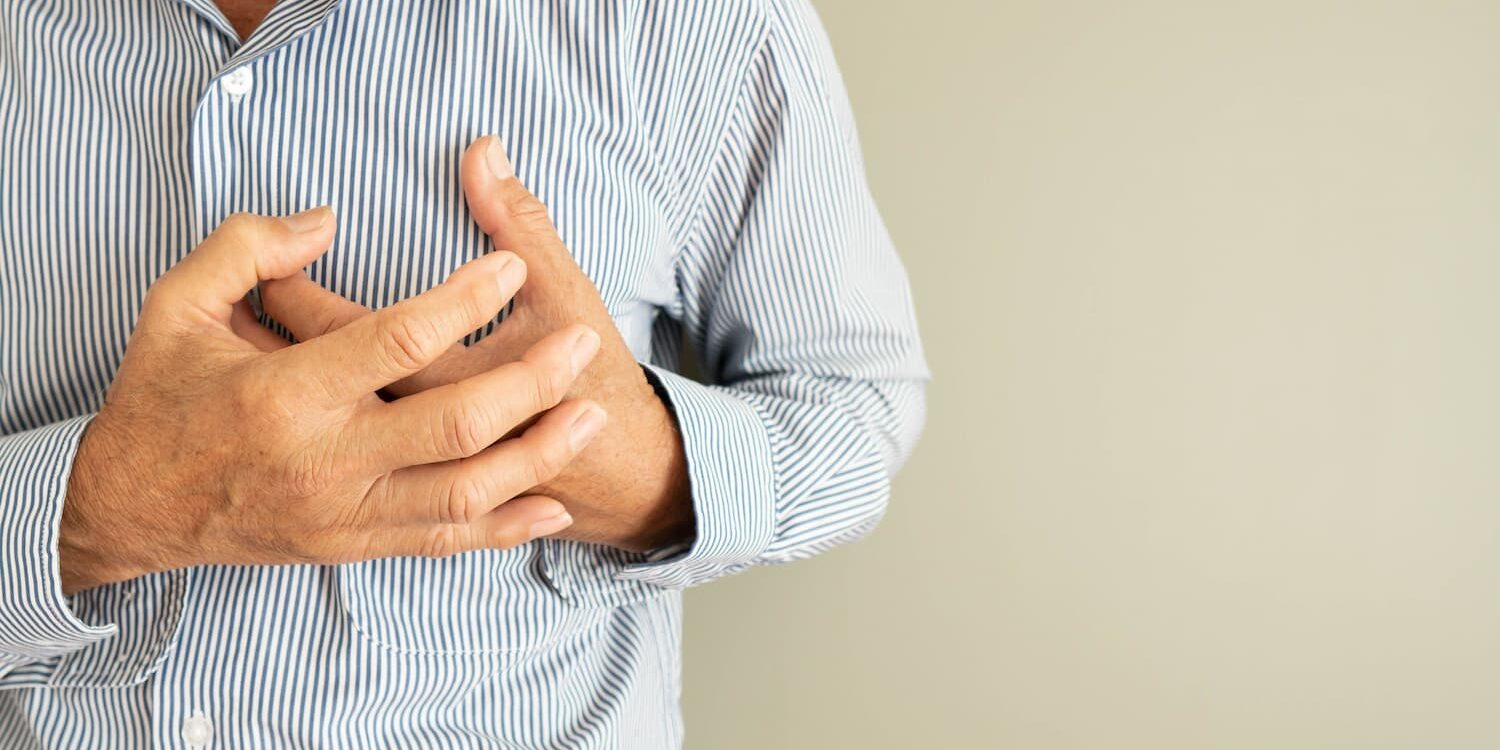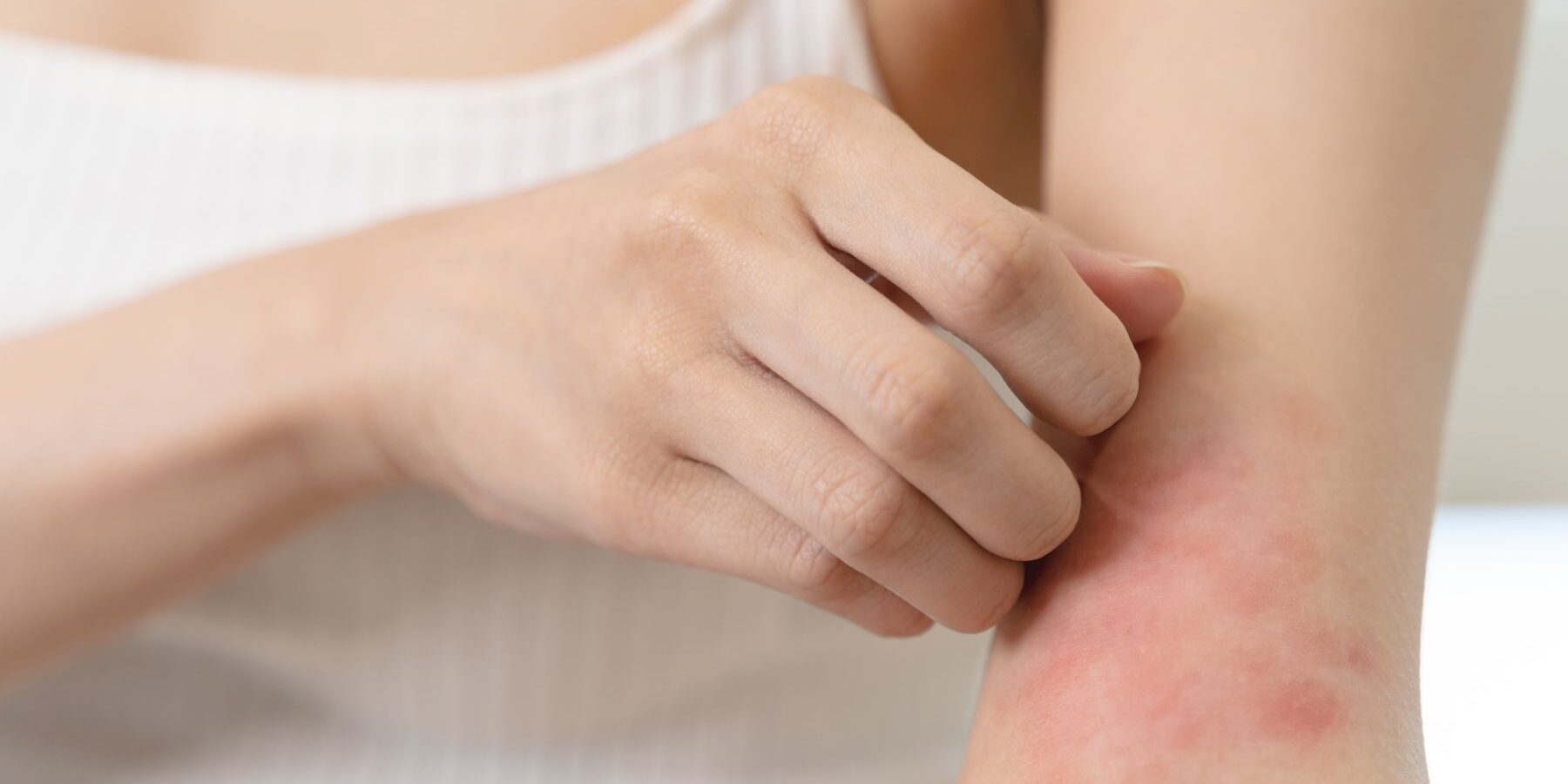If you’ve experienced forehead acne before, you’ll know that it can be rather stubborn.
Forehead acne can look like red bumps under the skin; these are called papules. The bumps can sometimes have pus underneath them, making them look white on the top. When pus is present, they’re then called pustules.
However, just like other forms of acne, forehead acne can be alleviated with the right treatment. In this article, we’re going to take a look at what acne is, what causes forehead acne, and how you can get rid of it.
What causes forehead acne?
Like other types of acne, forehead acne can develop when the pores in your skin become blocked. This happens when small glands (sebaceous glands) beneath the surface of your skin produce too much of an oily substance called ‘sebum’.
A normal amount of sebum helps to keep your skin healthy and hydrated, but too much can mix with dead skin cells and clog your pores, leading to acne.
Acne can develop for several reasons, but the most common causes are:
- Hormonal changes. Hormone fluctuations, particularly during puberty, can cause an increase in oil production in the skin — clogging pores and leading to forehead acne.
- Stress. Stress has been linked to causing acne, although we don’t know 100% why that is. But if you notice that your skin breaks out when you’re stressed, it could be the cause.
- Medications. Some medications have acne listed as a side effect of their use. For example, steroids, lithium, and anticonvulsants. It’s important to know the side effects of your medication, as you want to be able to rule it out as a cause for your acne.
Acne is not caused by hair products, make-up, or poor personal hygiene. Acne is also not contagious.
Types of forehead acne
Although forehead acne may develop in one part of the face, there are several different types of forehead acne.
Comedonal acne (whiteheads and blackheads)
This type of forehead acne isn’t inflamed and can be closed or opened, as well as being white in colour. Comedonal forehead acne can sometimes be called whiteheads too.
If the comedone is open, then the comedone oxidises when exposed to air — turning it dark in colour. This is called a blackhead.
Inflammatory acne
If bacteria gets inside the comedone, then it can become irritated, leading to inflammation. This type of forehead acne will appear red and sore, and even be too painful to touch.
Nodular acne
Nodular acne is sometimes called cystic acne, and this type can be quite common in forehead acne. Nodular acne is the severest form, and it can be buried deep in the skin. These spots can even cause scarring, so you don’t want to pick them or squeeze them if you want to avoid this.
Acne can also be categorised as mild, moderate and severe. For mild forehead acne, you should speak with a pharmacist and for moderate or severe, a dermatologist (a doctor who specialises in the treatment of skin conditions) or GP.
How to get rid of forehead acne
It’s important to remember that acne cannot be cured but, instead, managed with the right treatment. The aim of acne treatment is total skin clearance so that no acne remains.
Treating your acne needs to be done properly. Using things like toothpaste or other homemade concoctions or ‘natural acne remedies’ is not recommended. There are much more effective and safe treatments available from the pharmacist or dermatologist. Your dermatologist will be able to advise you further.
Below is some advice to follow to help get rid of forehead acne. Working with a dermatologist is the best approach to looking after your skin and personalising your forehead acne treatment approach.
Do not squeeze your spots
Although it can be tempting, do not squeeze or pick at any forehead acne. This can cause scarring, soreness and infection in the area.
Specific ingredients
Your dermatologist may recommend using products that contain an ingredient such as salicylic acid, niacinamide, azelaic acid or benzoyl peroxide. Stronger versions of benzoyl peroxide are available on prescription if your acne is persistent.
How well these ingredients work will depend on you. Trial and error can sometimes be needed in order to find the right product. If you are unsure what products or ingredients to look for, speak with a dermatologist.
Prescription medications for forehead acne
If over-the-counter treatments are not working, then you may need something stronger on prescription.
Prescription medications for acne may include ingredients such as:
- Antibiotics (oral or topical) – topical antibiotics can eliminate bacteria on the skin that can infect your hair follicles.
- Topical retinoids – these help increase the turnover of skin cells which removes dead cells from the surface of your skin.
- Combined contraceptives and anti-androgen treatments for women – taking a contraceptive pill that contains oestrogen and progesterone can decrease the amount of androgens (sex hormone) which can lower the production of sebum.
- Oral isotretinoin
Our specialists at London Medical have extensive experience in the safe use of medical acne treatments. They will be able to prescribe the product with the right potency for your skin to treat your acne, and can give you guidance on frequency of application and length of usage.
Forehead acne treatment
If your home treatments aren’t working and your forehead acne is severe and persistent, then it’s best to speak to a dermatologist.
They’ll be able to prescribe you any suitable medication and advise if any medical treatments could be beneficial such as atopical or oral medication that is most appropriate for you
These treatments can’t be accessed at home, but they may work better than home remedies when it comes to eliminating forehead acne. Any medical treatments must be carried out by a specialist — if done incorrectly, the skin could be damaged.
Book an appointment
With the help of the Dermatology team at London Medical, you could achieve smoother skin and get rid of your forehead acne.
Book an appointment with our expert Dermatology team today to be on your way to clearer skin.
Sources
Search treatments & services A-Z
Search for a specific treatment or service.


